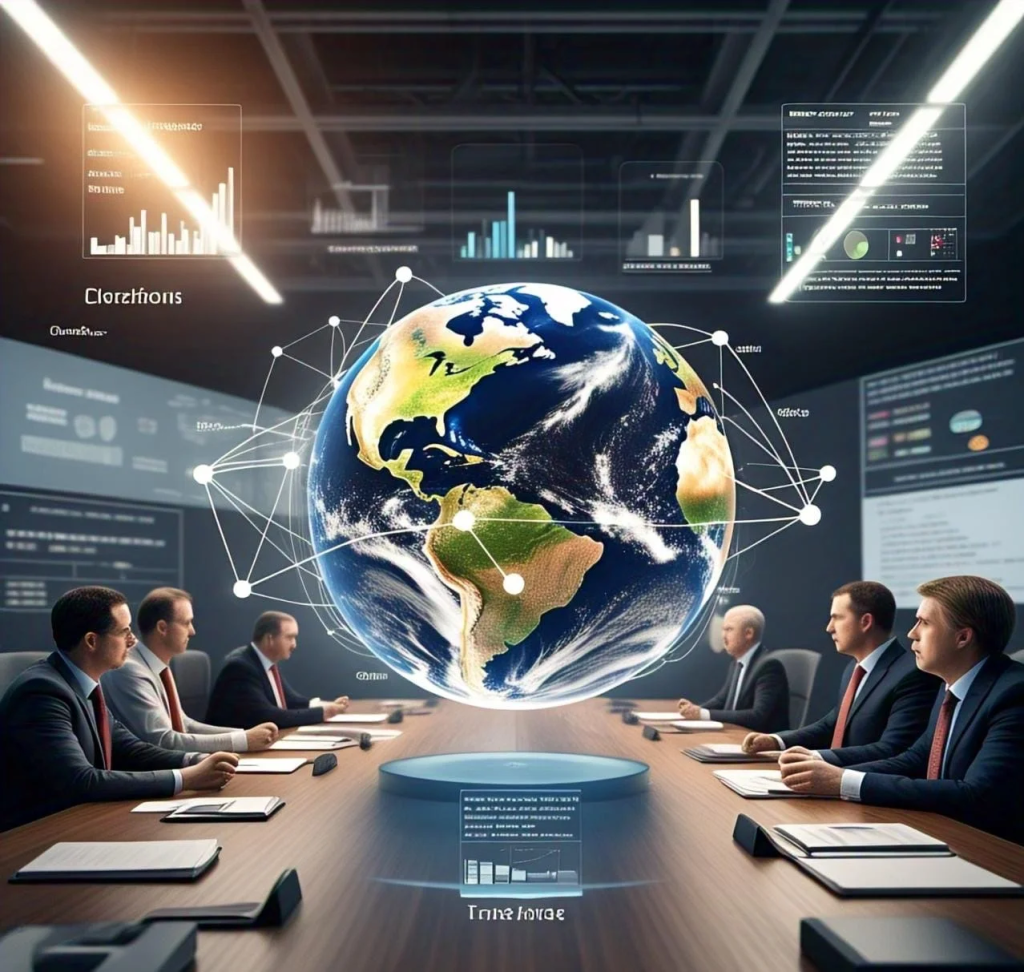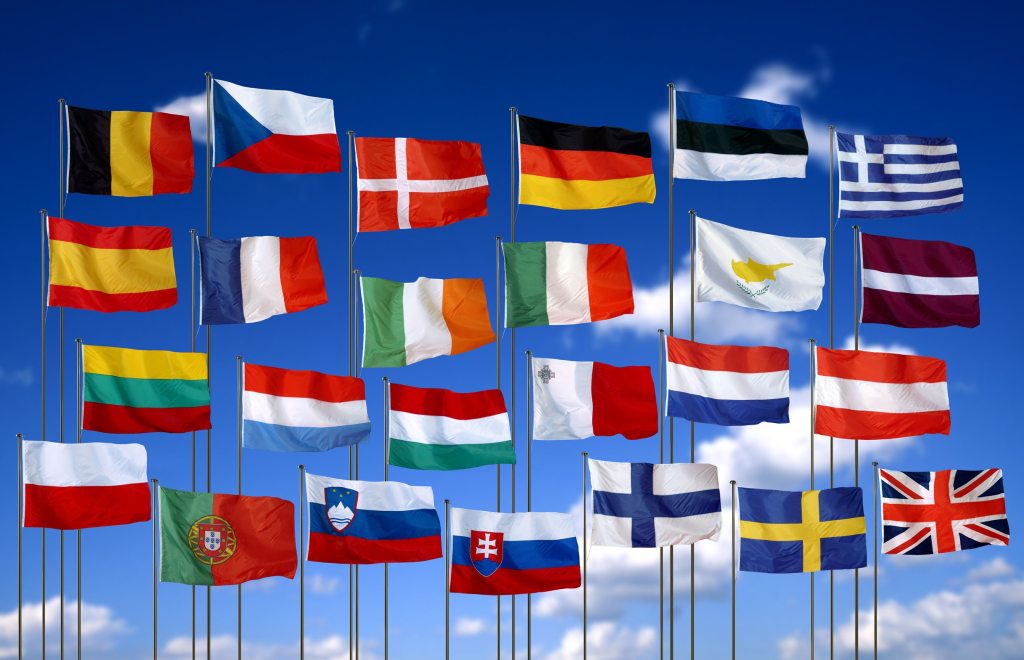In today’s global economy, international trade has evolved from a simple exchange of goods into a complex web of interconnected relationships that profoundly shape our world. The movement of products, services, capital, and ideas across borders has transformed economies, reshaped geopolitical relationships, and influenced social structures worldwide. This intricate system of global exchange has created unprecedented prosperity while simultaneously generating significant challenges that demand thoughtful consideration. Understanding the multifaceted impact of global trade provides essential context for navigating our interconnected future.
The Evolution of Global Trade Systems
The history of international trade reveals a continual progression toward greater interconnection and complexity.
Historical Development of Trade Networks
Trade between distant regions has ancient roots:
- Early silk and spice routes connected Asia, Africa, and Europe as early as 130 BCE
- Maritime exploration in the 15th-17th centuries established global sea trading networks
- The Industrial Revolution transformed production capacity and transportation efficiency, reshaping international economics
- Post-WWII institutions like GATT and later the WTO created formalized trade frameworks
This historical evolution demonstrates trade’s consistent role as a driver of technological innovation, cultural exchange, and economic development.
Modern Trade Architecture
Today’s global trade operates within sophisticated structures:
- Multilateral Frameworks: WTO agreements establish baseline rules for 164 member nations
- Regional Trade Agreements: Arrangements like ASEAN, USMCA, and the EU create deeper integration
- Bilateral Relationships: Thousands of two-country agreements address specific trade issues
- Special Economic Zones: Designated areas with modified trade rules to encourage development
- Digital Trade Platforms: Emerging systems facilitating cross-border e-commerce and services
These overlapping structures create a complex governance environment attempting to balance national sovereignty with global integration.
Shifting Production Patterns
Global production has undergone fundamental reorganization:
- Global Value Chains: Products assembled from components manufactured across multiple countries
- Specialization Deepening: Countries focusing on specific production stages rather than entire products
- Just-in-Time Manufacturing: Inventory systems dependent on reliable cross-border logistics
- Service Sector Globalization: Increasing trade in intangible services beyond physical goods
These changes have dramatically increased efficiency while creating new forms of economic interdependence between nations.
Economic Impacts of Global Trade
Trade’s economic effects extend far beyond simple exchange, reshaping entire economic systems.
Growth and Productivity Effects
Trade has been a significant engine for economic expansion:
Efficiency Through Specialization
- Countries focusing on areas of comparative advantage
- Resource allocation optimization increasing overall productivity
- Economies of scale enabled by access to global markets
- Knowledge transfer accelerating technological adoption
Empirical Growth Evidence
- World Bank research indicates trade-oriented economies typically grow 1.5 times faster than closed economies
- Post-trade liberalization periods show average GDP increases of 1.0-1.5% annually
- Export-oriented manufacturing sectors demonstrate 2-3 times the productivity growth of non-traded sectors
- Foreign direct investment flows correlate strongly with technology diffusion and productivity improvements

Employment and Wage Effects
Trade’s impact on workers varies significantly across sectors and skill levels:
- Job Creation: Export-oriented industries generate new employment opportunities
- Displacement Challenges: Certain sectors face job losses from import competition
- Skill Premium Development: Increased returns for highly-skilled workers
- Geographic Concentration: Uneven distribution of benefits and costs across regions
The aggregate employment effect is typically positive, though the transition costs for displaced workers can be substantial without adequate support systems.
Consumer Benefits
Consumers gain substantially from international trade:
- Price Reductions: Import competition and efficiency gains lower consumer prices
- Product Diversity: Access to global products expands consumer choice
- Quality Improvements: International competition drives product quality standards
- Innovation Acceleration: Global markets incentivize new product development
These benefits are widely distributed but often less visible than concentrated production impacts.
Environmental Dimensions of Global Commerce
The environmental consequences of global trade present complex sustainability challenges.
Carbon Footprint of International Shipping
Transport-related emissions constitute a significant environmental cost:
- Maritime shipping generates approximately 2.5% of global greenhouse gas emissions
- Air freight produces 7-50 times more emissions per ton-kilometer than sea transport
- Container ships have become more efficient but total shipping volume continues rising
- Alternative fuel research for shipping lags behind other transportation sectors
The impact of global trade on transportation emissions remains a critical environmental challenge.
Resource Extraction and Production Shifts
Trade affects where and how resources are utilized:
Extraction Intensity
- Demand for raw materials driven by global consumption patterns
- Mining and harvesting activities often concentrated in less regulated regions
- Complex ownership structures sometimes obscuring environmental responsibility
- Trade in environmental services and technologies providing potential solutions
Pollution Haven Concerns
- Production sometimes migrating to areas with lower environmental standards
- Regulatory arbitrage potentially undermining global environmental governance
- Evidence suggesting technology transfer can counterbalance this effect
- Certification systems emerging to track environmental standards across borders
Biodiversity and Ecosystem Impacts
Trade influences biodiversity through multiple mechanisms:
- Introduction of invasive species through shipping and cargo movement
- Habitat conversion to accommodate export-oriented agriculture
- Wildlife trafficking and illegal trade in endangered species
- Land-use changes driven by global commodity markets
These impacts require coordinated international responses beyond conventional trade policy.

Social and Cultural Dimensions
Beyond economic and environmental effects, trade shapes social structures and cultural exchanges.
Inequality Patterns
Trade’s distributive effects create complex inequality dynamics:
- Between-Country Convergence: Developing economies with trade integration often gain relative to developed nations
- Within-Country Divergence: Domestic inequality sometimes increases with trade exposure
- Sectoral Disparity: Variations in how trade affects different economic sectors
- Geographic Concentration: Benefits clustering in export-oriented regions and urban centers
The relationship between trade and inequality depends significantly on domestic policies and institutional quality.
Labor Standards and Working Conditions
Global commerce influences workplace environments worldwide:
- Race to the Bottom Concerns: Competitive pressure potentially undermining labor protections
- Upward Harmonization Possibilities: Trade agreements increasingly incorporating labor standards
- Consumer Awareness Effects: Global supply chain transparency driving corporate responsibility
- Informal Sector Challenges: Difficulty extending protections to workers outside formal systems
The interaction between trade policy and labor standards remains contentious in international negotiations.
Cultural Homogenization and Differentiation
Trade creates dual pressures on cultural expression:
Homogenization Forces
- Global brands and products creating similar consumption patterns
- Media and entertainment flowing across borders
- Standardization of business practices and professional norms
- English language dominance in international commerce
Differentiation Responses
- Cultural products gaining global markets through digital platforms
- Local adaptation of global products to suit cultural preferences
- Heritage preservation efforts supported by tourism and export markets
- Cultural identity reinforcement as reaction to globalization
This tension between global convergence and local distinctiveness shapes cultural evolution in the trading system.
Geopolitical Implications
Trade relationships fundamentally shape international relations and power structures.
Strategic Interdependence
Trade creates complex security implications:
- Economic Leverage: Trade dependencies used as foreign policy instruments
- Peace Dividends: Commercial relationships potentially reducing conflict incentives
- Resource Security: Access to critical materials influencing strategic planning
- Technology Transfer Concerns: Dual-use technologies affecting security balances
Nations increasingly evaluate trade through both economic and strategic lenses.
Governance Challenges
Managing the global trading system presents governance dilemmas:
- Sovereignty vs. Integration: Balancing national autonomy with international coordination
- Institutional Representation: Ensuring developing nations have meaningful voices in trade governance
- Regulatory Coherence: Aligning diverse national systems without excessive homogenization
- Dispute Resolution: Creating effective mechanisms for mediating trade conflicts
These challenges reflect fundamental tensions between globalization and democratic governance.
Emerging Power Dynamics
Trade patterns reflect and influence shifting global power structures:
- Rise of China and other emerging economies altering traditional trade relationships
- Digital trade creating new forms of economic influence
- Regional integration initiatives reshaping alliance structures
- Resource-exporting nations leveraging strategic commodities for influence
The evolution of trade architecture increasingly reflects multipolarity rather than the post-WWII Western-dominated system.
Supply chain dynamics and Vulnerabilities
Recent disruptions have highlighted both the efficiency and fragility of global supply networks.
Pandemic Disruption Lessons
COVID-19 revealed critical vulnerabilities:
Concentration Risks
- Over-reliance on specific geographic sources for critical products
- Just-in-time inventory systems lacking resilience buffers
- Limited redundancy in key supply chain nodes
- Inadequate visibility into multi-tier supplier networks
Adaptation Responses
- Nearshoring and friend-shoring to reduce geopolitical risks
- Inventory strategy adjustments balancing efficiency with resilience
- Digitalization to improve supply chain transparency and flexibility
- Diversification of supplier relationships across multiple regions
These responses suggest an emerging rebalancing between efficiency and resilience considerations.
Critical Sector Vulnerabilities
Certain sectors demonstrate particular strategic importance:
- Semiconductor Production: Concentrated manufacturing creating technology chokepoints
- Pharmaceutical Supply Chains: API production concentration raising health security concerns
- Rare Earth Elements: Limited sourcing options for materials critical to green technology
- Food Systems: Climate vulnerability in key agricultural regions threatening food security
Policy attention increasingly focuses on securing these strategically significant supply chains.

Digital Trade and Services
The fastest-growing trade segment presents unique considerations:
- Data Localization Tensions: Competing approaches to data sovereignty
- Digital Service Taxation: Challenges in applying tax systems to virtual services
- Platform Governance: Regulatory approaches to dominant digital intermediaries
- Cybersecurity Implications: Security considerations in cross-border digital services
These issues reflect the evolution of trade beyond physical goods into intangible exchanges.
Future Trajectories and Policy Considerations
Looking ahead, several key trends will shape global trade’s development and impact.
Technology-Driven Transformations
Technological changes continue reshaping trade fundamentals:
- Automation Effects: Changing the labor component of comparative advantage
- Additive Manufacturing: 3D printing potentially localizing certain production
- Blockchain Applications: Supply chain transparency and trade documentation
- Artificial Intelligence: Optimizing logistics and predicting market shifts
These technologies may disrupt established patterns of comparative advantage and specialization.
Sustainability Integration
Environmental considerations increasingly influence trade frameworks:
- Carbon Border Adjustments: Emerging mechanisms to address embedded carbon
- Circular Economy Principles: Design for reuse affecting product flows
- Renewable Energy Trade: Growth in green technology commerce
- Sustainable Development Goals: Trade policy alignment with broader objectives
The intersection of trade and environmental policy represents a critical frontier for global governance.
Balancing Localization and Globalization
Future trade systems may seek new equilibria:
- Strategic autonomy in critical sectors without comprehensive deglobalization
- Regionalization as an intermediate approach between national and global systems
- Differentiated approaches across sectors based on strategic importance
- Values-based trading blocs potentially replacing purely economic arrangements
This rebalancing reflects evolving perspectives on globalization’s appropriate scope and limits.
Conclusion
Global trade stands as one of humanity’s most consequential collective endeavors, creating webs of connection that bind nations, businesses, and individuals in complex relationships of mutual dependence. Its impacts extend far beyond economic measures, influencing everything from environmental conditions to cultural expressions to geopolitical power dynamics. As we navigate an era of significant transformation, understanding these multifaceted effects becomes essential for developing trade systems that maximize benefits while addressing legitimate concerns.
The future of global trade will inevitably reflect tensions between competing values: efficiency versus resilience, specialization versus security, global integration versus local control. Resolving these tensions requires trade policy to become more inclusive, considering perspectives beyond traditional economic measures to encompass broader societal impacts. It also necessitates complementary domestic policies that ensure trade’s benefits are widely shared while providing support for those negatively affected by economic transitions.
Perhaps most importantly, the evolution of global trade requires thoughtful consideration of what kind of world we wish to create. Trade systems are not merely technical arrangements but expressions of how we understand our relationships with one another across national boundaries. By approaching trade policy with this broader perspective, we can work toward systems that harness the tremendous productive potential of global exchange while ensuring it serves human flourishing and planetary sustainability.
FAQ: Global Trade Impacts
Q: Does international trade help or hurt developing countries?
A: The relationship between trade and development is nuanced. Trade typically offers developing countries expanded markets for their products, access to technology and capital, job creation in export sectors, and integration into global value chains. However, outcomes depend significantly on domestic policies, institutional quality, and the specific terms of trade agreements. Countries need adequate infrastructure, education systems, and governance capacity to fully capture trade benefits. Additionally, trade liberalization without appropriate sequencing can disrupt local industries before they develop competitive capacity. The most successful examples, particularly in East Asia, have combined strategic trade integration with thoughtful industrial policy rather than following one-size-fits-all approaches.
Q: How does trade affect the environment beyond transportation emissions?
A: Trade’s environmental impact extends well beyond shipping emissions through multiple mechanisms. It shapes global land use patterns, influencing deforestation and habitat conversion for export agriculture. It affects resource extraction intensity based on global demand and price signals. Trade can either exacerbate environmental challenges through regulatory arbitrage (companies seeking locations with lower standards) or help address them through technology transfer and economies of scale for green solutions. The relationship depends heavily on policy frameworks, with trade agreements increasingly incorporating environmental provisions. Ultimately, sustainable trade requires internalizing environmental costs that have traditionally been externalized, whether through carbon pricing, certification systems, or other mechanisms that align economic incentives with ecological realities.
Q: Is the trend toward protectionism likely to continue, or will globalization resume its previous trajectory?
A: Rather than either returning to hyperglobalization or moving toward widespread protectionism, we’re likely seeing a recalibration toward what some economists call “managed globalization” or “slowbalization.” This approach maintains global integration while being more selective about its forms and more attentive to resilience, security, and distributional concerns. Certain strategic sectors like semiconductors, pharmaceuticals, and energy are seeing policy intervention to ensure supply security, while non-critical sectors remain highly globalized. Regional trade integration is strengthening alongside a decline in global integration across distant markets. Digital trade continues expanding rapidly even as physical goods face more scrutiny. This recalibration reflects a more mature understanding of globalization’s benefits and limitations rather than a simple reversal of previous trends.

